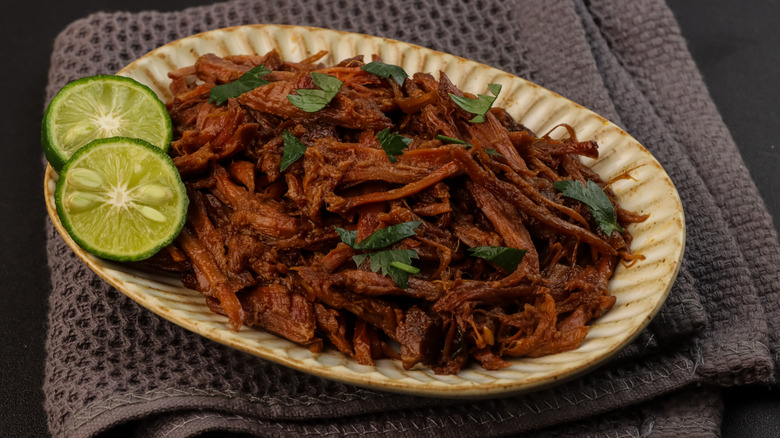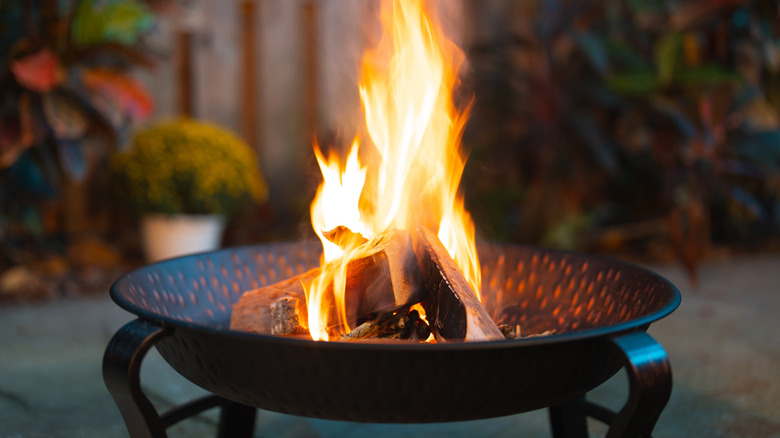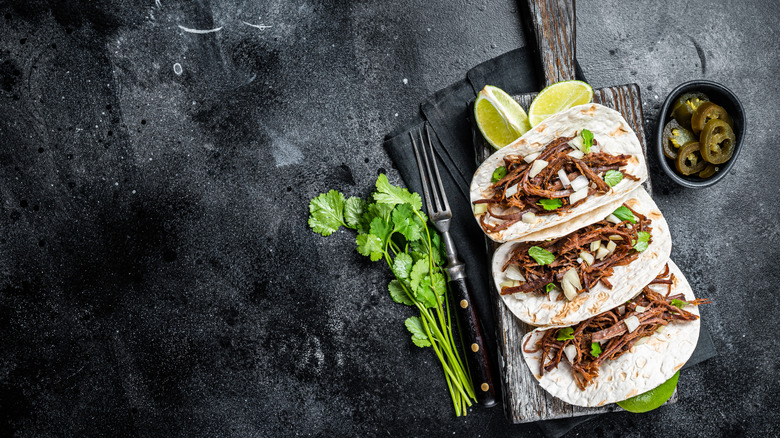The Ancient (And Delicious) Origins Of Beef Barbacoa
To be honest, I'm not even sure I really knew what barbacoa was, and definitely didn't know where it came from before ordering it at Chipotle. I'm actually pretty sure I had always thought it was pork or something, so it was quite surprising to me when I found out that the tender, melt-in-your-mouth goodness that I had come to love was actually braised beef. It also seems that the meat has a pretty interesting history attached to it as well.
It traces back to the Indigenous peoples of the Caribbean, and eventually took on new meaning and methods as it spread. Today, you'll find it simmered and slow-cooked in kitchens all over, but the way we prepare and eat barbacoa still owes a lot to its ancient past. In its earliest form, barbacoa was a pit-style cooking method. The word "barbacoa" itself comes from the Taíno language, and referred to the wooden framework used to support the meat over the fire. As the technique made its way through Central America and into Mexico, it evolved, but the heart of it stayed the same: tender meat, cooked low and slow, and seasoned with the boldest flavors available.
Nowadays, the beef version of barbacoa is especially popular. While traditional versions might use goat, lamb, or even whole cow heads, modern barbacoa often features well-marbled cuts like beef cheek or chuck roast (the best cut of meat that you'd use for pot roast), braised in a spicy blend of chiles, vinegar, and aromatics until it falls apart. Thankfully, it's not one of those foods where the American version is nothing like the original. But no matter how it's made, the end result is always the same — rich and flavorful.
The original cooking method was centered around flavor and efficiency
Back in the day, there was no such thing as stovetops or timers. If you wanted barbacoa, you had to make it the old-fashioned way. That meant digging a pit, heating up rocks, and wrapping the meat in agave or banana leaves. Everything went underground. People would cover the pit, walk away, and let the fire and steam do the rest. Hours later, what came out wasn't just cooked meat. It was rich, juicy, full of smoky flavor, and completely fall-apart tender.
That method might sound extreme now, but it worked. It kept the moisture in and gave the meat time to absorb every bit of flavor from the seasoning and the fire. As barbacoa spread, the ingredients changed based on what was available. In southern regions, people leaned toward lamb or goat. Further north, beef took over. But the process still respected time. Even now, when folks cook it at home, they don't rush it. They just use what's easier, like a slow cooker or oven. It's not about convenience, though; it's about respecting the process.
How barbacoa adapted across regions and into modern kitchens
There's something about beef barbacoa that feels different from your usual meat dish. Maybe it's the way the flavor builds while it cooks, or how it soaks up everything you put in it. This isn't meat that just fills you up. It's meat that leaves you thinking about the next time you're going to make it.
What also sets barbacoa apart is how easy it is to use. You can stuff it into a tortilla, pile it on top of rice, roll it into breakfast burritos, or spoon it over nachos. There's no wrong way to serve it. And the leftovers only get better the next day. It's also one of those meals that's perfect for feeding a bunch of people. Make one big pot, and you've got dinner for the crew. That slow-cooked tenderness makes it feel like a celebration, even if it's just a regular Tuesday night. It's really one of my favorite comfort foods that isn't too fussy, and it delivers every time.


